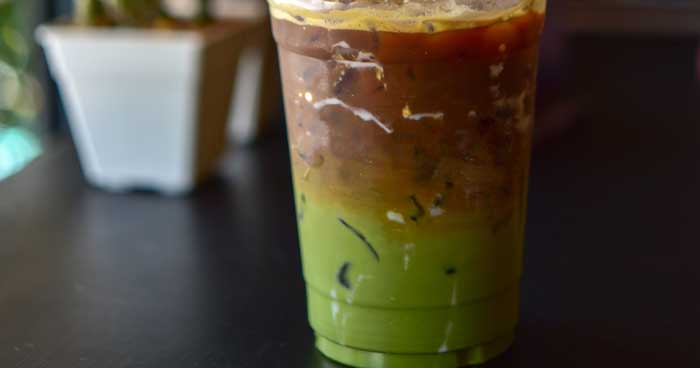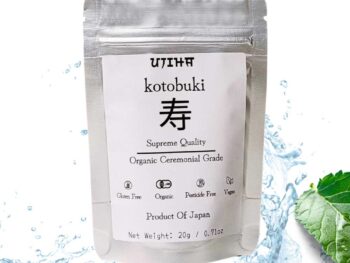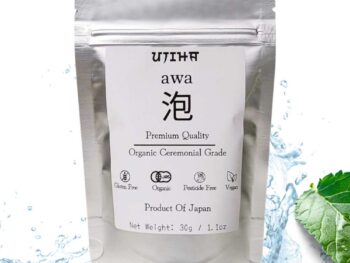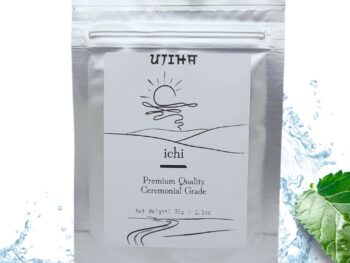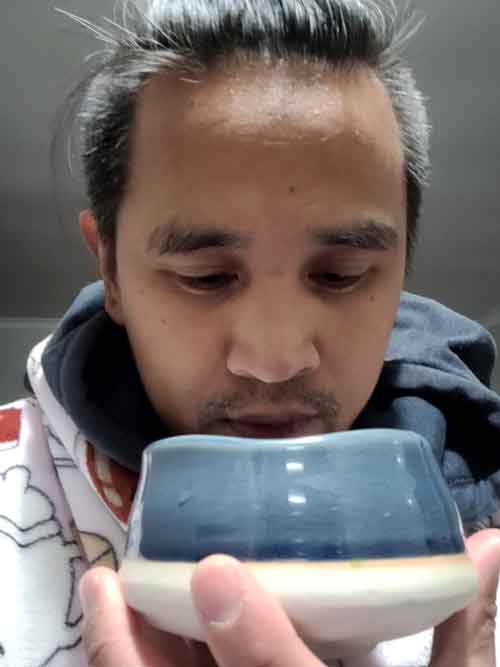You’ve probably heard of many types of tea, right? Black tea gives you a strong boost, green tea feels refreshing, and oolong tea is interesting and a bit mysterious.
Now, let’s talk about matcha. Matcha is different from other teas. When you drink matcha, you’re having the whole tea leaf because it’s ground into a fine powder. This means you get everything – more taste, more good stuff for your body, and yes, more caffeine.
Matcha caffeine content changes the game. It doesn’t just wake you up. Matcha gives you a nice, steady energy that lasts a long time without making you feel jittery like coffee sometimes can.
So, if you need something to help wake up in the morning or to help you keep going in the afternoon, matcha might be what you’re looking for. You also get lots of antioxidants, which are great for your health. Pretty great, isn’t it?
What is Matcha?
Let’s talk about what matcha is. It’s a type of green tea but it’s different because it comes in a powdered form. Unlike other teas that you steep and then remove from the water, with matcha, you mix the powder into the water and drink it all. This means you’re getting the whole tea leaf.
When you compare matcha to other teas, it’s unique. Black tea has a strong flavor because it’s fully oxidized. Green tea is lighter and has a fresher taste because it isn’t oxidized. Oolong tea is somewhere in between, partly oxidized with a variety of flavors.
What makes matcha special is how it’s prepared before it even gets to you. The tea leaves are shaded before they are picked. This increases their chlorophyll, which makes matcha that bright green color. Since you consume the entire leaf in powdered form, you get a more intense flavor. Drinking matcha is more than just drinking tea; it’s an experience, with a rich taste in every cup.
The Unique Processing of Matcha
Matcha’s special qualities come from how it’s prepared. Here’s a closer look:
- Shading: Before the tea leaves are picked, they are shaded for a few weeks. This shading process makes the leaves greener by increasing their chlorophyll content. It also makes the leaves more nutritious, giving them a kind of caffeine and L-Theanine boost.
- Grinding: After the leaves are harvested, they are ground into a very fine powder. This grinding process is thorough, making the powder fine enough to mix smoothly into water.
When you drink matcha, you’re consuming the entire tea leaf in powdered form. This is different from other teas where you steep the leaves and then remove them. Because you consume the whole leaf, matcha gives you a rich flavor and more nutrients, more caffeine. It’s this careful shading and grinding process that makes matcha unique, offering a stronger taste and more health benefits.
Caffeine Content in Matcha vs. Other Teas
Alright, let’s talk about the buzz factor – caffeine. When it comes to matcha, it’s like the energy drink of the tea world, but without the crash and burn. Compared to your standard black, green, or oolong teas, matcha’s got a bit of an edge. Why? It’s all in how you drink it. With matcha, you’re not just steeping leaves; you’re consuming the whole leaf ground up. This means you get all the caffeine the leaf has to offer.
So, how does it stack up? Your average cup of green tea might have about 30-50 mg of caffeine, while black tea can hit around 40-70 mg. Oolong is somewhere in the middle. But matcha? Buckle up, because it packs about 70 mg per brew. But here’s the kicker: it’s a smoother ride. Thanks to L-Theanine, an amino acid that’s big in matcha, you get a calm, steady release of energy without the jitters.
Here’s the geeky stuff. A gram of matcha can contain up to 19 – 44 mg of caffeine, depending on its grade. Ceremonial grade matcha generally contain higher caffeine due to its cultivation method compared to lower grade matcha.
[Source: Health Benefits and Chemical Composition of Matcha Green Tea: A Review]
What influences matcha’s caffeine content? A few things: the shading before harvest boosts not just chlorophyll but also caffeine levels. Plus, the fact that you’re drinking the whole leaf means you’re getting every bit of caffeine it contains. It’s like comparing eating an orange to drinking just the juice – you get more from the whole thing. So, if you’re looking for a gentle but firm kick to get you going, matcha might just be your go-to cup.
Health Benefits Related to Matcha’s Caffeine
Matcha tea has caffeine just like coffee, but it works differently in your body. This is because matcha also has something called L-Theanine, which is a natural ingredient that helps you feel calm.
When you drink matcha, the caffeine wakes you up, but the L-Theanine keeps you from feeling shaky or nervous. This means you can feel alert and focused without the bad side effects that coffee sometimes gives, like feeling jittery or crashing later.
Here’s what happens when you drink matcha:
- The caffeine gives you a gentle boost of energy that lasts longer.
- L-Theanine helps keep your mind calm and clear, so you can concentrate better.
- Together, they make you feel awake and focused, but still relaxed.
Also, these ingredients in matcha can make your brain work better, helping you remember things and learn new stuff. They can also make you feel less stressed and more relaxed.
So, drinking matcha is a great way to get energy and focus, plus it’s good for your brain and mood. It’s like a healthier version of your morning coffee that also helps you stay calm and clear-headed.
How to Enjoy Matcha While Managing Caffeine Intake
If you love matcha but worry about too much caffeine, here’s how you can still enjoy it:
Tips to enjoy matcha without too much caffeine:
- Use Less Matcha: Start with a little bit of matcha powder (like half a teaspoon). This way, you get less caffeine.
- Mix It More: If you think it’s still too strong, add more water or milk to make it lighter.
- Watch Other Caffeine: Don’t forget that other things like coffee or chocolate also have caffeine. Try not to have too much of those on the same day you drink matcha.
Best times to drink matcha for energy without trouble sleeping:
- Morning: Drinking matcha in the morning is great for a smooth start with energy that lasts.
- Before Exercise: Having matcha about half an hour before you work out can help you feel more alert and ready.
- Early Afternoon: A cup of matcha after lunch can help you avoid feeling sleepy in the middle of the day. But try not to drink it too late, so you can sleep well at night.
This way, you can enjoy matcha’s good stuff without worrying about getting too much caffeine.
Conclusion
In conclusion, matcha is a unique kind of tea that gives you more than just a caffeine boost. The health benefits are numerous. It has something called L-Theanine, which works with the caffeine to help you feel alert but calm at the same time. This means you can enjoy the energy without feeling too jittery.
Plus, ceremonial grade matcha, which is a really high-quality type of matcha, has even more caffeine and L-Theanine. This makes it an excellent choice if you’re looking for all the benefits matcha has to offer.
Remember, the L-Theanine in matcha helps balance out the caffeine. So, you get that awake feeling from the caffeine but without the usual downsides like feeling shaky or crashing later. It’s the best of both worlds!
If you’re interested in trying out this amazing tea, consider getting some ceremonial grade matcha. It’s packed with the good stuff that can help you start your day right or get through a long afternoon. Why not give it a try and see the difference for yourself?

